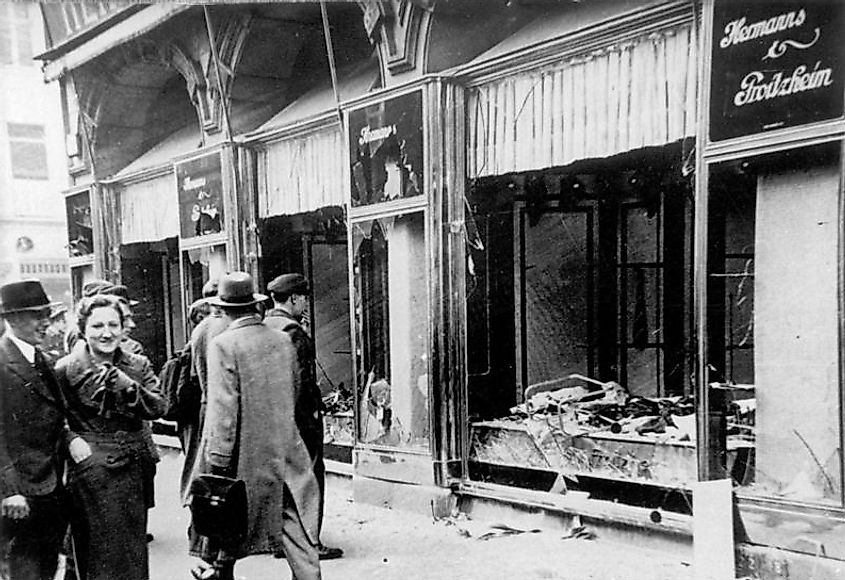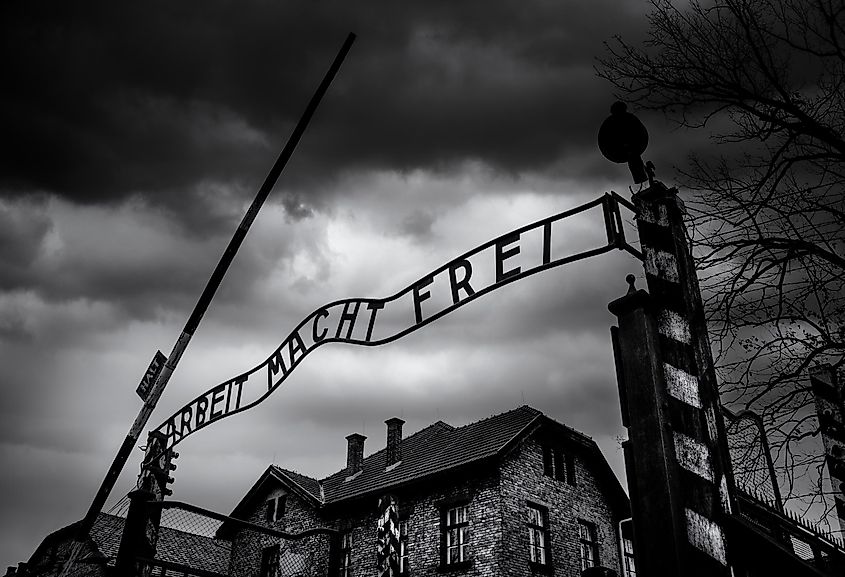
The Night Of Broken Glass
Antisemitism was the most prevalent form of Nazi racism, with it ultimately culminating in the Holocaust. However, there were years of state-sponsored Jew-hatred in Germany before the Final Solution. One of the key events during this period was Kristallnacht (the Night of Broken Glass, or November Pogrom), a pogrom against German Jews from November 9 to November 10, 1938.
Hitler's Understanding Of Jews

Before understanding specific instances of discrimination against German Jews, it is necessary to comprehend Adolf Hitler's antisemitism. To Hitler, the nature of the world was one of struggle, specifically struggle between races. These races were organized hierarchically. However, according to Hitler, "the Jews" subverted this hierarchy by introducing democracy, human rights, capitalism, communism, and ideas themselves. This made it so "stronger" races could lose to "weaker" ones. Hitler thought that this was what happened in the First World War, with Jewish politicians supposedly betraying the German Army. He was thereby obsessed with preventing another such subversion of nature. How to answer this "Jewish Question" question thus informed all of the Nazis' antisemitic policies and actions.
Early Discrimination

Hitler was named chancellor on January 30, 1933. His rise was a signal to many Nazis that it was time to ramp up antisemitism. Therefore, throughout March of that year, members of the Sturmabteilung (SA), the paramilitary wing of the Nazi Party, raided Jewish-owned stores, pulling them onto the streets, beating them up, and forcing them to march with signs that said, among other things, "Jewish swine." On April 1, the Nazis then organized a boycott of Jewish-owned stores, in which SA men waited outside Jewish shops, physically intimidating their owners and people who entered. The first significant antisemitic law was enacted on April 7. Called the Law for the Re-establishment of a Professional Civil Service, it banned "non-Aryans" from working in this sphere. This resulted in the five thousand Jewish Germans employed in the civil service being fired.
The Nuremberg Laws

However, perhaps the most significant form of state-enforced antisemitism occurred with the Nuremberg Laws, introduced in September 1935. This name was the general title given to two specific laws. The first, the Reich Citizenship Law, stipulated that German citizens must have "Aryan" blood. It also stated that Jews were not Aryan, thereby revoking their citizenship. The second law was the Law for the Protection of German Blood and Honor, which banned marriages between Jews and non-Jews. Jews were also prohibited from flying the imperial or Nazi German flag and banned from hiring Aryan women under forty-five. In short, after the introduction of the Nuremberg Laws, Jews were officially second-class citizens. This law thus set the stage for future violence against them.
Night Of Broken Glass

On November 7, 1938, 17-year-old Herschel Grynszpan, the son of recently deported Polish Jews living in Germany, shot German diplomat Ernst Von Roth. This event prompted significant outrage, resulting in an orgy of violence against German Jews from November 9 to November 10. Jewish-owned shop fronts were smashed, and synagogues were burned.

People also broke into Jewish homes, beating them and damaging their personal belongings. These acts were carried out by everyday Germans, as well as members of the SA and Schutzstaffel (SS). Furthermore, the government told police and firefighters to ignore the violence and burning synagogues, contributing to the escalating carnage. Ultimately, over 100 Jews were killed from November 9 to November 10, 1938, and 25 to 30 thousand Jewish men were sent to concentration camps.
The Beginning Of The Holocaust

Some historians argue that the November Pogrom marked the beginning of the Holocaust. At the very least, it was a turning point in the treatment of European Jews. Indeed, following the German invasion of Poland in September 1939, the Nazis began forcing Jews into ghettos. The following year, discussions started about deporting Jews to places like Madagascar and Siberia. Thereafter, with the German invasion of the Soviet Union in the summer of 1941, the Einsatzgruppen, a special task force of the SS, followed the German Army, rounding up and massacring Soviet citizens. Millions of Jews were killed this way. Finally, by 1942, six death camps had been opened in Poland (Chelmno, Bełżec, Sobibór, Treblinka, Auschwitz-Birkenau, and Majdanek), all of which were tasked with killing as many Jews as possible.
In conclusion, the Night of Broken Glass represented both the culmination of rising antisemitism and a new stage of overtly murderous Jew-hatred. Indeed, it was the most rampant display of widespread violence against Jews since the Nazis rose to power. Furthermore, its aftermath saw the attempted extermination of all European Jewry.











